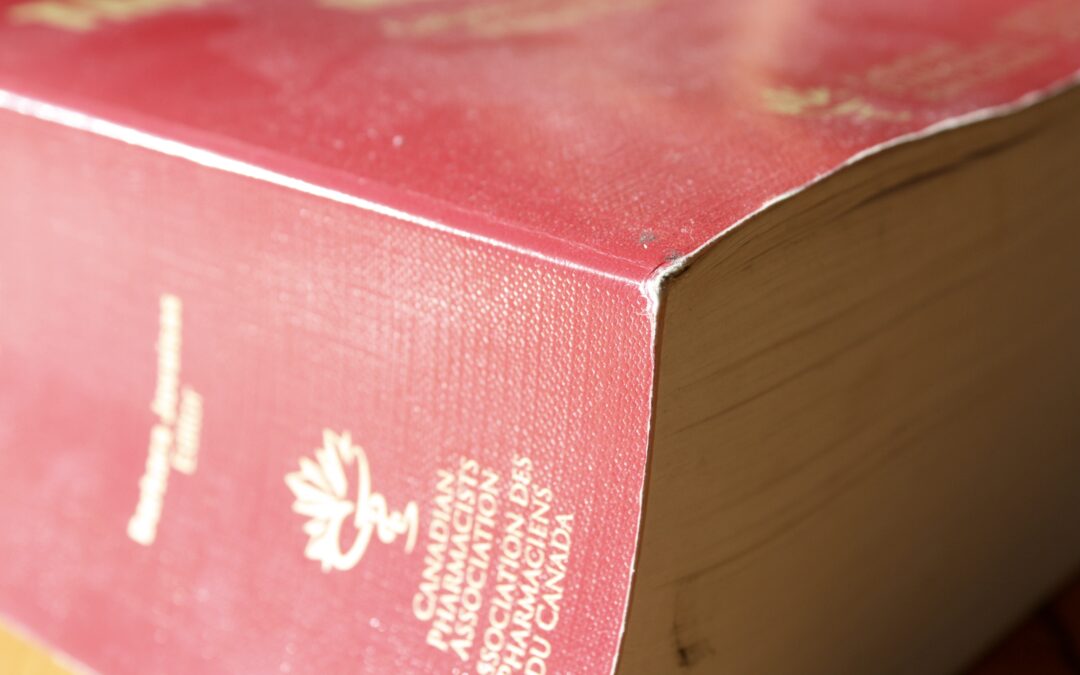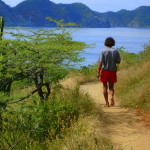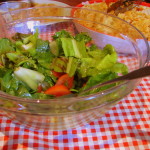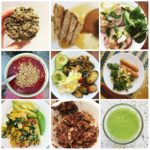 A singular narrative is told and retold regarding medicine in the west. The story goes roughly like this: the brightest students are accepted into medical schools where they learn—mainly through memorization—anatomy, physiology, pathology, diagnostics, microbiology, and the other “ologies” to do with the human physique. They then become doctors. These doctors then choose a specialty, often associated with a specific organ system (dermatology) or group of people (pediatrics), who they will concentrate their knowledge on. The majority of the study that these doctors undergo concerns itself with establishing a diagnosis, i.e.: producing a label, for the patient’s condition. Once a diagnosis has been established, selecting a treatment becomes standardized, outlined often in a cookbook-like approach through guidelines that have been established by fellow doctors and pharmaceutical research.
A singular narrative is told and retold regarding medicine in the west. The story goes roughly like this: the brightest students are accepted into medical schools where they learn—mainly through memorization—anatomy, physiology, pathology, diagnostics, microbiology, and the other “ologies” to do with the human physique. They then become doctors. These doctors then choose a specialty, often associated with a specific organ system (dermatology) or group of people (pediatrics), who they will concentrate their knowledge on. The majority of the study that these doctors undergo concerns itself with establishing a diagnosis, i.e.: producing a label, for the patient’s condition. Once a diagnosis has been established, selecting a treatment becomes standardized, outlined often in a cookbook-like approach through guidelines that have been established by fellow doctors and pharmaceutical research.
The treatment that conventional doctors prescribe has its own single story line involving substances, “drugs”, that powerfully over-ride the natural physiology of the body. These substances alter the body’s processes to make them “behave” in acceptable ways: is the body sending pain signals? Shut them down. Acid from the stomach creeping into the esophagus? Turn off the acid. The effectiveness of such drugs are tested against identified variables, such as placebo, to establish a cause and effect relationship between the drug and the result it produces in people. Oftentimes the drug doesn’t work and then a new one must be tried. Sometimes several drugs are tried at once. Some people get better. Some do not. When the list is exhausted, or a diagnosis cannot be established, people are chucked from the system. This is often where the story ends. Oftentimes the ending is not a happy one.
On July 1st, naturopathic doctors moved under the Regulated Health Professionals Act in the province of Ontario. We received the right to put “doctor” on our websites and to order labs without a physician signing off on them. However, we lost the right to inject, prescribe vitamin D over 1000 IU and other mainstay therapies we’d been trained in and been practicing safely for years, without submitting to a prescribing exam by the Canadian Pharmacists Association. Naturopathic doctors could not sit at the table with the other regulated health professions in the province until we proved we could reproduce the dominant story of western medicine—this test would ensure we had.
Never mind that this dominant story wasn’t a story about our lives or the medicine we practice—nowhere in the pages of the texts we were to read was the word “heal” mentioned. Nowhere in those pages was there an acknowledgement about the philosophy of our own medicine, a respect towards the body’s own self-healing mechanisms and the role nature has to play in facilitating that healing process. It was irrelevant that the vast majority of this story left out our years of clinical experience. The fact that we already knew a large part of the dominant story, as do the majority of the public, was set aside as well. We were to take a prescribing course and learn how primary care doctors (general practitioners, family doctors and pediatricians), prescribe drugs. We were to read accounts of the “ineffectiveness” of our own therapies in the pages of this narrative. This would heavy-handedly dismiss the experience of the millions of people around the world who turn to alternative medicine every year and experience success.
We were assured that there were no direct biases or conflict of interests (no one was directly being paid by the companies who manufacture these drugs). However, we forget that to have one story is to be inherently and dangerously biased. Whatever the dominant story is, it strongly implies that there is one “truth” that it is known and that it is possessed by the people who tell and retell it. Other stories are silenced. (Author Chimamanda Ngozi Adichie describes this phenomenon in her compelling TED Talk, “The Danger of a Single Story”).
Despite the time and money it cost me, taking the prescribing course afforded me an opportunity to step outside of the discouraging, dominant story of the standard medical model and thicken the subordinate stories that permeate the natural and alternative healing modalities. These stories began thousands of years ago, in India and in China, at the very root of medicine itself. They have formed native ancestral traditions and kept entire populations and societies alive and thriving for millennia. Because our stories are not being told as often, or told in the context of “second options” or “last resorts”, when the dominant narratives seem to fail us, the people who tell them run the risk of being marginalized or labeled “pseudoscientific.” These dismissals, however, tell us less about The Truth and more about the rigid simplicity of the singular story of the medical model.
It is frightening to fathom that our body, a product of nature itself, encompasses mysteries that are possibly beyond the realm of our capacity for understanding. It’s horrifying to stand in a place of acknowledgement of our own lack of power against nature, at the inevitability of our own mortality. However, if we refuse to acknowledge these truths, we close ourselves off to entire systems that can teach us to truly heal ourselves, to work with the body’s wisdom and to embrace the forces of nature that surround us. The stories that follow are not capital T truths, however, they can enrich the singular story that we in the west have perpetuated for so long surrounding healing.
The body cannot be separated into systems. Rather than separating depression and diarrhea into psychiatry and gastroenterology, respectively, natural medicine acknowledges the interconnectivity between the body’s systems, none of which exist in a vacuum. When one system is artificially manipulated, others are affected. Likewise, an illness in one system may result in symptoms in another. There have been years of documentation about the gut-brain connection, which the medical model has largely ignored when it comes to treatment. The body’s processes are intricately woven together; tug on one loose thread and the rest either tightens or unravels.
We, as products of nature, may never achieve dominion over it. Pharmaceutical drugs powerfully alter the body’s natural physiology, often overriding it. Since these drugs are largely manmade, isolated from whole plants or synthesized in a lab, they are not compounds found naturally. Despite massive advances in science, there are oceans of what we don’t know. Many of these things fit into the realm of “we don’t know what we don’t know”—we lack the knowledge sufficient to even ask the right questions. Perhaps we are too complex to ever truly understand how we are made. Ian Stewart once wrote, “If our brains were simple enough for us to understand them, then we’d be so simple that we couldn’t.” And yet, accepting this fact, we synthesize chemicals that alter single neurotransmitters, disrupting our brain chemistry, based on our assumption that some people are born in need of “correcting” and we have knowledge of how to go about this corrective process. Such is the arrogance of the medical model.
There are always more than two variables in stories of disease and yet the best studies, the studies that dictate our knowledge, are done with two variables: the drug and its measured outcome. Does acetaminophen decrease pain in patients with arthritis when compared to placebo? A criticism of studies involving natural medicine is that there are too many variables—more than one substance is prescribed, the therapeutic relationship and lifestyle changes exert other effects, a population of patients who value their health are different than those who do not, the clinical experience is more attentive, and so on. With so many things going on, how can we ever know what is producing the effect? However, medicine is limited in effect if we restrict ourselves to the prescription of just one thing. This true in herbalism, where synergy in whole plants offers a greater effect than the sum of their isolated parts. By isolating a single compound from a plant, science shows us that we may miss out on powerful healing effects. Like us, plants have evolved to survive and thrive in nature; their DNA contains wisdom of its own. Stripping the plant down to one chemical is like diluting all of humanity down to a kidney. There is a complexity to nature that we may never understand with our single-minded blinders on.
Studies are conducted over the periods of weeks and, rarely, months, but very rarely are studies done over years or lifetimes. Therefore, we often look for fast results more than signs of healing. This is unfortunate because, just as it takes time to get sick, it takes time to heal. I repeat the previous sentence like a mantra so patients who have been indoctrinated into a medical system that produces rapid results can reset expectations about how soon they will see changes. Sometimes a Band-Aid is an acceptable therapy; few of us can take long, hard looks at our lives and begin an often painful journey in uncovering what hidden thought process or lifestyle choices may be contributing to the symptoms we’re experiencing. However, the option of real healing should be offered to those who are ready and willing.
When we study large masses of people, we forget about individuality. When we start at the grassroots level working with patients on the individual level, we familiarize ourselves with their stories, what healing means to them. In science, large studies are favoured over small ones. However, in studies of thousands of people, singular voices and experiences are drowned out. We lose the eccentric individualities of each person, their genetic variability, their personalities, their preferences and their past experiences. We realize that not everyone fits into a diagnostic category and yet still suffers. We realize that not everyone gets better with the standard treatments and the standard dosages. Starting at the level of the individual enables a clinician to search for methods and treatments and protocols that benefit each patient, rather than fitting individuals into a top-down approach that leaves many people left out of the system to suffer in silence.
It is important to ask the question, “why is this happening?” The root cause of disease, which naturopathic medicine claims to treat is not always evident and sometimes not always treatable. However, the willingness to ask the question and manipulate the circumstances that led to illness in the first place is the first step to true and lasting healing; everything else is merely a band-aid solution, potentially weakening the body’s vitality over time. No drug or medical intervention is a worthy substitute for clean air, fresh abundant water, nutritious food, fulfilling work and social relationships, a connection to a higher purpose, power or philosophy and, of course, good old regular movement. The framework for good health must be established before anything else can hope to have an effect.
The system of naturopathic medicine parallels in many ways the system of conventional pharmaceutical-based medicine. We both value science, we both strive to understand what we can about the body and we value knowledge unpolluted by confusing variables or half-truths. However, there are stark differences in the healing philosophies that can’t be compared. These differences strengthen us and provide patients with choice, rather than threatening the establishment. The time spent with patients, the principles of aiming for healing the root cause and working with individuals, rather than large groups, offer a complement to a system that often leaves people out.
There are as many stories of healing and medicine as there are patients. Anyone who has ever consulted a healthcare practitioner, taken a medicine or soothed a cold with lemon and honey, has experienced some kind of healing and has begun to form a narrative about their experience. Anyone with a body has an experience of illness, healing or having been healed. Those of us who practice medicine have our own experience about what works, what heals and what science and tradition can offer us in the practice of our work. Medicine contains in its vessel millions of stories: stories of doubt, hopelessness, healing, practitioner burnout, cruises paid for my pharmaceutical companies, scientific studies, bias, miracle cures, promise, hope and, most of all, a desire to enrich knowledge and uncover truth. Through collecting these stories and honouring each one of them as little truth droplets in the greater ocean of understanding, we will be able to deepen our appreciation for the mystery of the bodies we inhabit, learn how to thrive within them and understand how to help those who suffer inside of them, preferably not in silence.








Beautifully written and I love the usage of concepts from Narrative Therapy in this context. This is what I call dogmatic science and how it is disconnecting us from our very selves in order to suppress symptoms, rather than truly tackle the difficult underlying questions. Be it naturopathic medicine, psychotherapy or finding extra-terrestrial life, it’s all the same. Hopefully, this narrative will change soon.
Thanks, Ayan! It will change if we work to strengthen the subordinate stories 😉
Very well relayed, clear and to the point. We must be proactive, investigate, gather as much information as needed. Stand firm and request the treatment we believe is best for us, and refuse to be guinia pigs to Big Pharm. They are not about healing, only masking, as that’s how they keep you ill and capitalize on you monetarily.